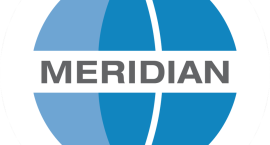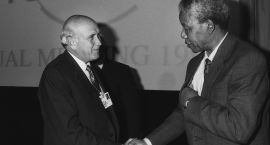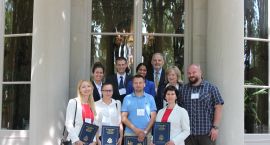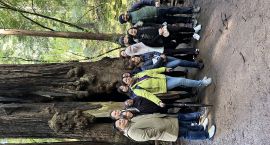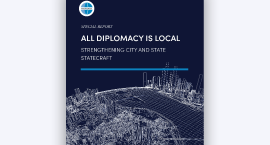Like many college students around the world, twenty-five Iraqis from the Iraqi Young Leaders Exchange Program (IYLEP) spent their summer on Facebook, Twitter, and Instagram. But they weren’t just chatting with friends and snapping photos of their vacation. They posted, tweeted, and hashtagged for a good cause: developing comprehensive social media strategies for local Richmond, Virginia non-profit organizations.
The IYLEP program, funded by the U.S. Embassy-Baghdad and administered by Meridian, brings 100 Iraqi undergraduates to the U.S. for a six-week study program. Students divide into four groups at four different partner universities, including Virginia Commonwealth University in Richmond. VCU’s Social Media Institute organized courses taught by social media experts where Iraqi students worked alongside a handful of American students, providing a great environment for exchange.
In addition to local media professionals from the Richmond Times-Dispatch and CBS-6, VCU arranged digital video conferences with non-profit social media specialists around the country. Katie Paine, the co-author of the class textbook Measuring the Networked Nonprofit, joined the class via Skype and focused on how non-profits assess and evaluate their outreach success. She also shared her experiences working with organizations such as DoSomething.org and UNICEF.
Jen Hauseman, head of social media for the Gates Foundation in Seattle also conferenced with the group via Skype. IYLEP students took special note of Hauseman’s comments on women and development. Hauseman said, “If you invest in women, it’s more likely they’ll invest in their families.” After the session, IYLEP participant Ammar Sabri added that he wished he could work with Hauseman at the Gates Foundation someday.
These intimate conversations with experienced professionals continued during a study tour in Washington, D.C. The Smithsonian Institute’s social media specialists talked to the group about the importance of consistent messaging and linking different social media platforms. At the Red Cross, Gloria Huang, a social engagement specialist, explained the notion of “digital volunteers”—individual volunteers who work online to help those in need access information and resources. Social media users are especially valuable to the Red Cross during disaster relief efforts, when it can be difficult to track down those suffering and give the aid they need. Volunteers help locate these people on social media like Twitter, Facebook, and Instagram and they direct them where to go.
Discussions with these national thought leaders helped inform the IYLEP students’ own social media campaigns for their chosen non-profits. At the end of the program, a panel of Richmond media experts judged the social media campaign proposals designed by IYLEPers. First prize went to the St. John’s Church Foundation group. Their design aimed to build recognition of the church and its foundation through the slogan, “What does liberty mean to you?,” a reference to Patrick Henry’s “Give me liberty or give me death” speech, given at the church in 1775. The Hanover Habitat for Humanity team, awarded second place, pitched a strategy to support a major upcoming fundraising event.
Most importantly, IYLEP students used their experience at VCU to design social media strategies and campaigns for non-profits and civil society organizations in their own communities back in Iraq.









